Steve Jobs: The Thomas Edison of Our Generation? Examining The Analogy
The untimely death of beloved Apple founder & CEO Steve Jobs earlier this month spurred a slew of articles comparing him to Thomas Edison, not to mention Henry Ford and Walt Disney. Jobs himself listed these men amongst those who inspired his work.
The New York Times made the comparison, along with BBC’s World Have Your Say, which invited Edison and Ford Winter Estates President & CEO Chris Pendleton to contribute to the program as a guest panelist (image below) during an hour-long international broadcast.
While there is no denying the impact both Edison and Jobs had on modern culture, does this analogy hold water? You decide:
- LEADERSHIP: Thomas Edison famously surrounded himself with “muckers:” an intelligent, hard working crew of critical thinkers. The Edison muckers provided a think-tank of great minds. Jobs emulated this style of team throughout his career.
- EMPHASIS ON RESEARCH & DEVELOPMENT: Both men invested and relied heavily upon research and development to provide new technological breakthroughs. Edison’s Menlo Park laboratory was in many ways a prototype for the type of research and development department Jobs would later utilize.
- ACHIEVING THE SEEMINGLY IMPOSSIBLE: When Edison first premiered the phonograph, the device seemed so implausible to some listeners that they believed he was a well-trained ventriloquist. Twentieth century consumers were similarly stunned by innovations like the early Apple personal computers and later, the iPod and iPhone.
- CULTURAL INSIGHT AND IMPACT: Both Edison and Jobs played a part in dramatic shifts in twentieth century culture. Edison helped to shape the music and motion picture industries that Jobs, in turn, influenced almost a century later. Similarly, Edison was involved in the creation of modern communications industry which Jobs later revolutionized.
- INNOVATION ACROSS MULTIPLE FIELDS: Jobs impacted the computing, technology, telecommunications, and entertainment industries, amongst others. Edison’s sphere of innovation extended even further, touching dozens of different industries including those mentioned above, as well as botany, electronics, chemistry, mining, and the cement industry.
- SIMPLICITY OF DESIGN: Jobs famously refined the designs of a variety of products, from cell phones to mp3 players. Edison also appreciated simplicity of design, continually reworking products to be simpler and more efficient.
- WORLD-CLASS MARKETING MINDS: Edison and Jobs both understood and mastered the crucial role of marketing in releasing innovative new products to the public.
- PATENTS: Jobs held over 300; Edison, over 1,000. Edison’s friend and winter neighbor Henry Ford, to whom Jobs has also been compared, held more than 100 patents.

World Have Your Say visits Naples and invites Edison and Ford Winter Estates President & CEO, Chris Pendleton, as a guest.
Want to know more? Read Inventing the Century by Neil Baldwin (available in our Museum Store) for an in-depth look at the cultural impact of Edison’s inventions. Or check out our recommended reading list.
Mrs. Edison’s Old Fashioned Recipe for Hickory Nut Cake
Old Fashioned Recipe for Hickory Nut Cake
Thomas Edison’s favorite, according to a letter from John Randolph, dated April 2, 1903.
1 ½ cups of sugar
1 cup of butter scaint
1 cup of milk
3 cups of flour
2 teaspoons baking powder
8 egg whites
1 teaspoon vanilla
1 pint chopped nuts
1 ½ cups pulverized sugar
Cake Mix sugar and butter scaint until a cream. Combine with milk, flour, baking powder, 6 egg whites beaten very stiff and vanilla. Ad the nuts, mix all together and bake in a moderate oven.
Frosting Let 1 ½ cups pulverized sugar boil until when put in cold water it becomes brittle. Beat the 2 egg whites until very stiff and add the sugar and beat until it gets cold. Flavor to taste.

The Edisons’ recipes were written during their lifetime, therefore the directions, measurements and styles of the recipes reflect the period in which they lived and their personal tastes. Because the recipes are original for the times, you will want to read them carefully and experiment liberally. We know you will enjoy a look at heir lives as well as their scrumptious recipes.
Our collection of vintage recipes can be found in Edison’s Family & Friends Recipes which is available in the Edison and Ford Winter Estates Museum Store or online at https://www.edisonfordwinterestates.org/store/Edisons-Family-Friends-Recipes.html.
Did you know sausages grow on trees?
Do sausages grow on trees? The Sausage Trees at the Edison and Ford Winter Estates have some growing now.
The sausages growing on our trees really aren’t sausages after all. They are actually just the fruit or seed pod formed by the Kigelia Africana, commonly known as the Sausage Tree.
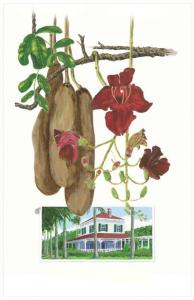
Sausage Tree painting by Megan Kissinger - available in the Museum Store
The brownish colored woody fruit is very fibrous and inedible, however, in the tree’s native habitat the fruit is often eaten by animals such as: Baboons, Giraffes, Elephants, Monkeys and Hippopotami. The mature fruits can reach a length of two feet long and weigh nearly fifteen pounds.
Before the tree bears the sausage-like fruit, the tree blossoms with hundreds of large, four to five inch maroon trumpet shape flowers born on long pendulous stalks. The flowers are pollinated at night in the tree’s native land by nectar seeking bats, but the lack of these bats here in Florida results in very few flowers getting pollinated and thus, very few of the sausage like fruits are formed.
The tree is native to tropical areas of Africa and is a member of the Bignoniaceae family of flowering plants. The Sausage Trees is a medium to large size tree, ranging in height from thirty to fifty feet.
The tree grows in tropical and sub-tropical climates and can stand some frost and temperatures down to 28 degrees. The tree does well here in Southern Florida and makes a great shade or specimen tree for your landscape.
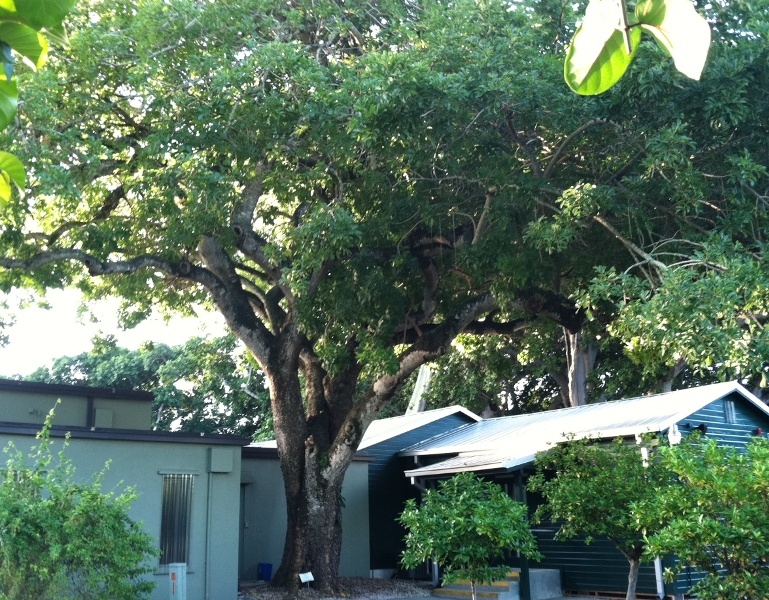
The sausage tree behind the ticket office is bearing sausages now.
If you are interested in learning more about the sausage tree or would like to buy one of your own, visit the Estates Garden Shoppe and let one of our horticulturists assist you.
New Staghorn Fern Joins Edison Ford Family
Our horticulturists recently went to Naples to pick up a donated stag horn fern. The plant was donated by the family of Kenneth and Ruth Ann Bruce and had been in their yard for well over thirty years. They are relocating and wanted the stag horn fern to have a great home here at the Edison Ford.
Thanks for the donation – we are happy to add a new member to our family!
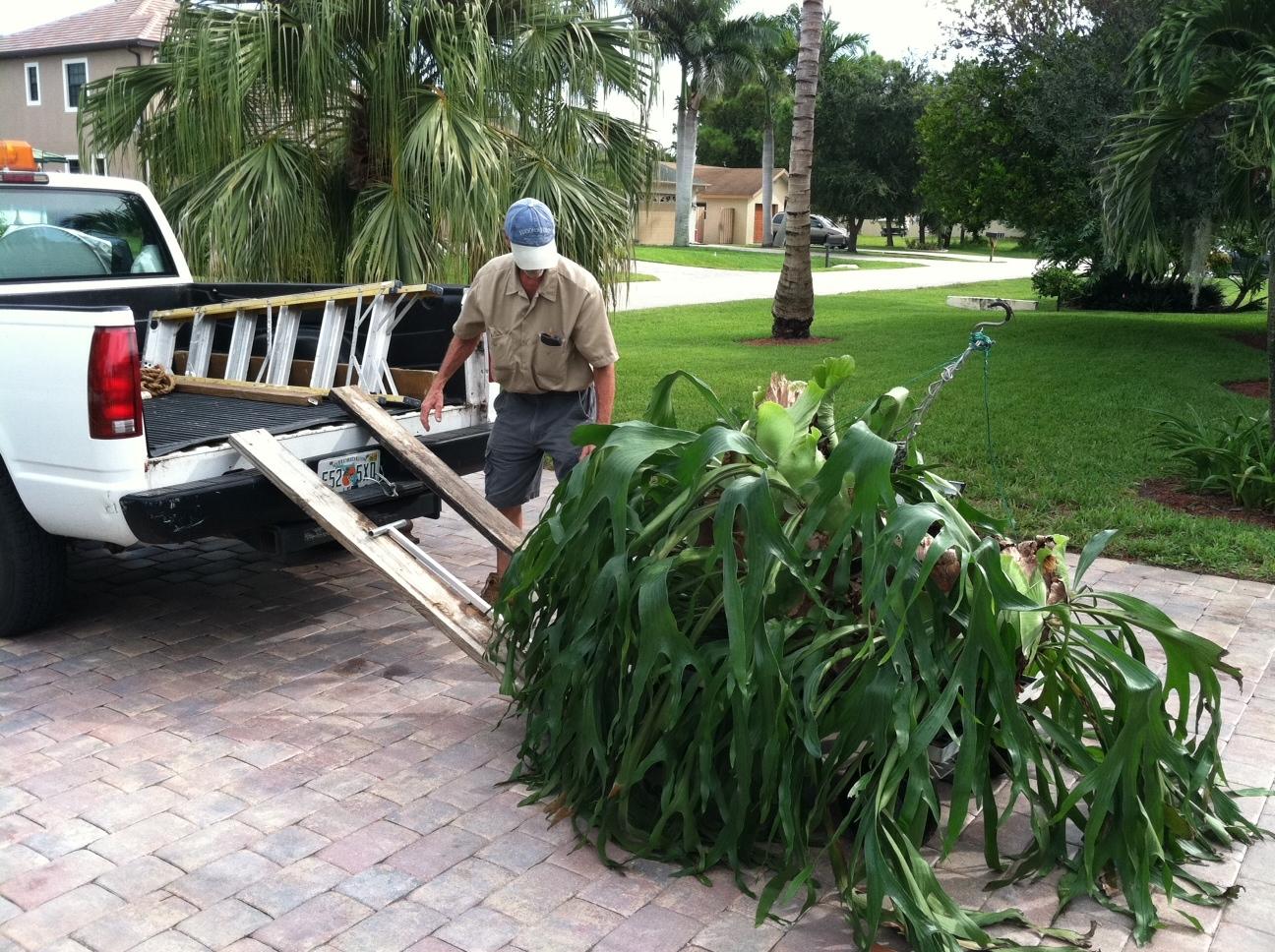
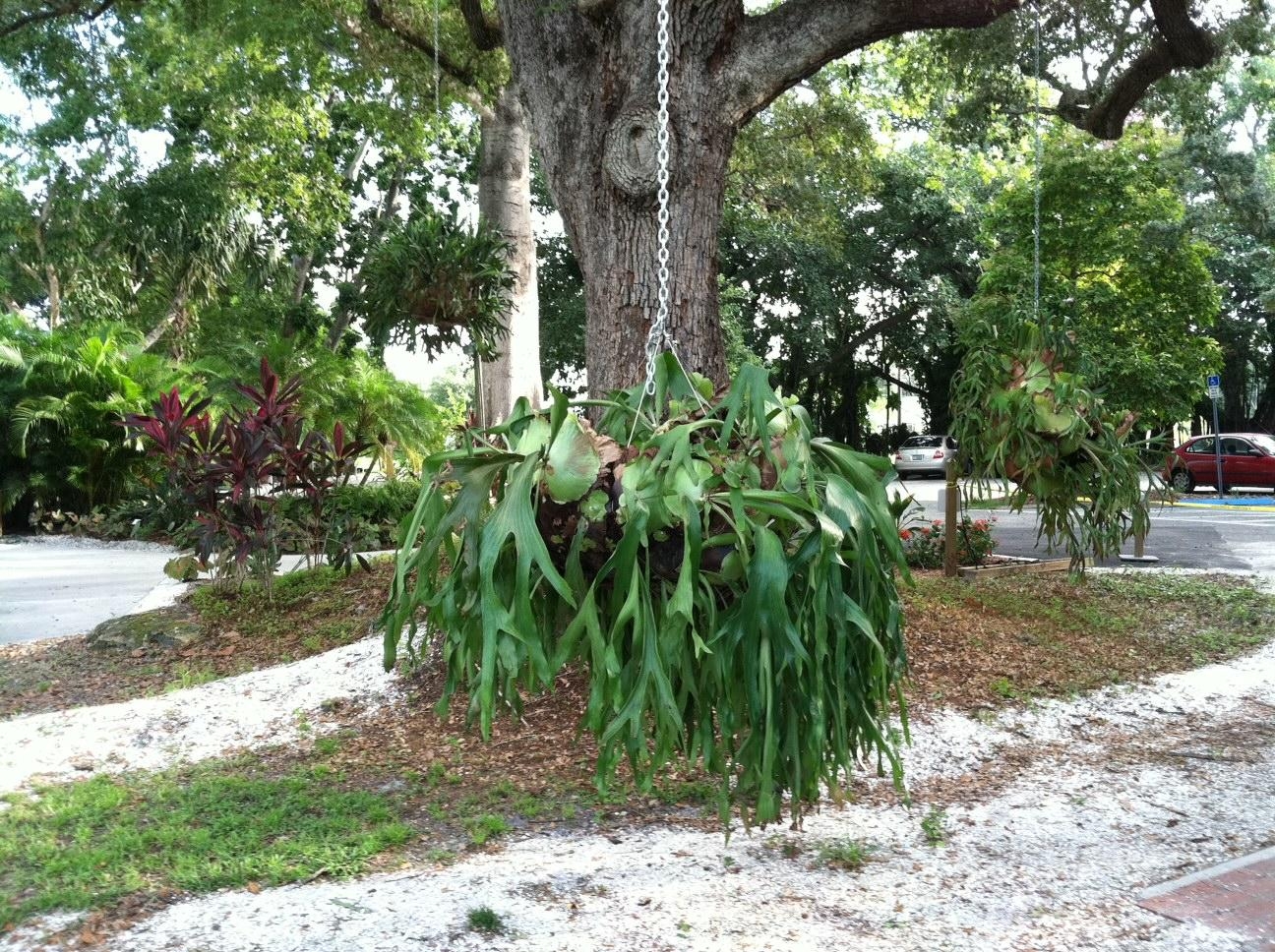
Dwarf Poinciana: A Garden Showstopper
Have you ever wanted a Royal Poinciana Tree, but in a much smaller size? Consider our October plant of the month the Dwarf Poinciana for your next garden addition.
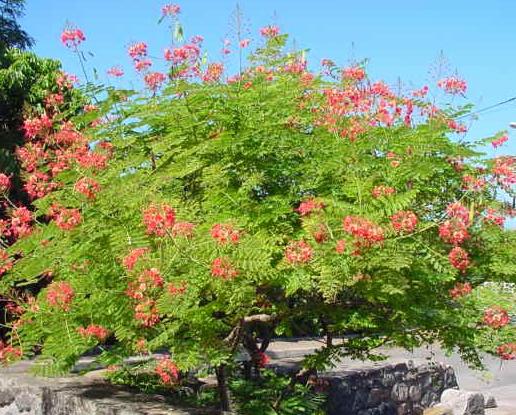
The Dwarf Poinciana (Caesalpinina pulcherrima) is an evergreen shrub that can be trained and pruned into a small specimen tree in frost free climate zones.
In zones 8 and 9 it can be damaged by frost, but will return in the spring and quickly re-grow. In the tropics it is also know as Peacock Flower or Pride of Barbados and can grow up to 15 feet tall and wide. In normal garden cultivation it will grow to about 8 to 10 feet tall and wide, but tolerates pruning in order to maintain shape and form.
The foliage is very fernlike and produces many showy flower blossoms that resemble those of the Royal Poinciana tree. The flower colors vary from the common red, orange and yellow variety, an all yellow variety and another with a pinkish rose coloration.
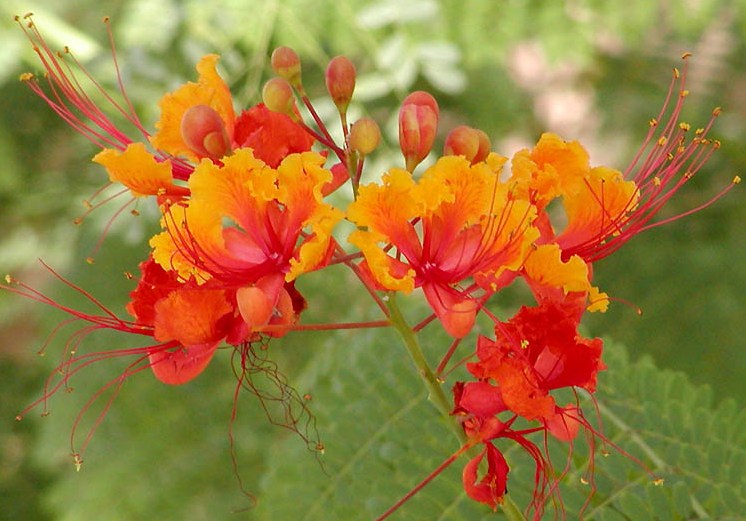
This is a great specimen to add to your garden. The Dwarf Poinciana can also be grown in a pot or container and brought inside if there is a threat of frost or freezing temperatures.
The Edison & Ford Estates Garden Shoppe is currently featuring the Dwarf Poinciana as our Plant of the Month and offering 20% off the purchase of a 6” potted Dwarf Poinciana in OCTOBER 2011.